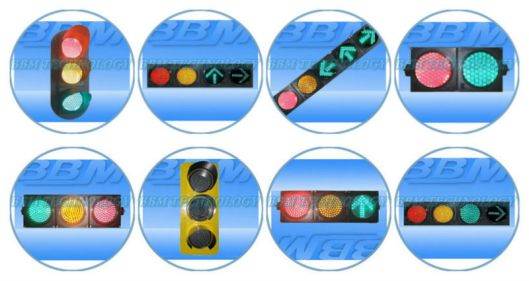The next time you stop at a junction, take a good look at the bright red light. If it looks like a honeycomb of vivid red dots, you’re enjoying LED traffic lights. Cities and towns around the globe have been methodically substituting their old incandescent traffic signals with the more power efficient LED since the mid 1990s. Such types of traffic signals have numerous benefits over incandescent models, but the 3 prime benefits are enhanced visibility, longer shelf life & lower energy expenses.
The advance of commercially possible LED traffic lights was originally troubled by the restriction of LEDs. Light Emitting Diode produce lights as a consequence of electrical power running via certain gases. At 1st, LEDs could only generate the color red, which restricted their use to monochromatic gears like calculators or alarm clock displays. Further improvements in the technology now have produced 3 colors employed for traffic signalling; green, red and amber.
One prime benefit of these traffic lights is enhanced visibility. Incandescent bulbs were covered by color filters, glass lenses and reflectors, which might have an effect on how much light exactly reached to the eyes of drivers. LED traffic lights employ a variety of bright LED that doesn’t need extra filters. If a single incandescent bulb burns out, the whole light series is disturbed. However, a tragic malfunction involving all the LEDs in a panel is rare indeed.
Another benefit is low maintenance cost. Approximately the expenses of LED traffic lights are upfront – LEDs are costly, and the signals themselves need more labour to generate. These expenditures are normally overlooked by low maintenance prices. If an incandescent bulb burns out, which occurs 3 times a years on standard, a trained town employee should substitute the bulb whilst traffic is unfocused. At the same time, LED lights may only need an annual cleaning of the shielding lenses.
On a related note, another benefit of LED traffic light is noticeable power savings. A typical incandescent bulb may utilize hundred watts of electrical energy to generate light, but an equal LED panel utilizes fifteen to twenty watts to accomplish the same intensity. Taking into account how many incandescent bulbs must be lit around the clock, it’s simple to understand why LEDs are so enticing to towns on tight power budget. Bigger towns can save considerable amount of cash by switching to LED traffic lights. LEDs are also eco friendly, so no environmental concerns at all!








